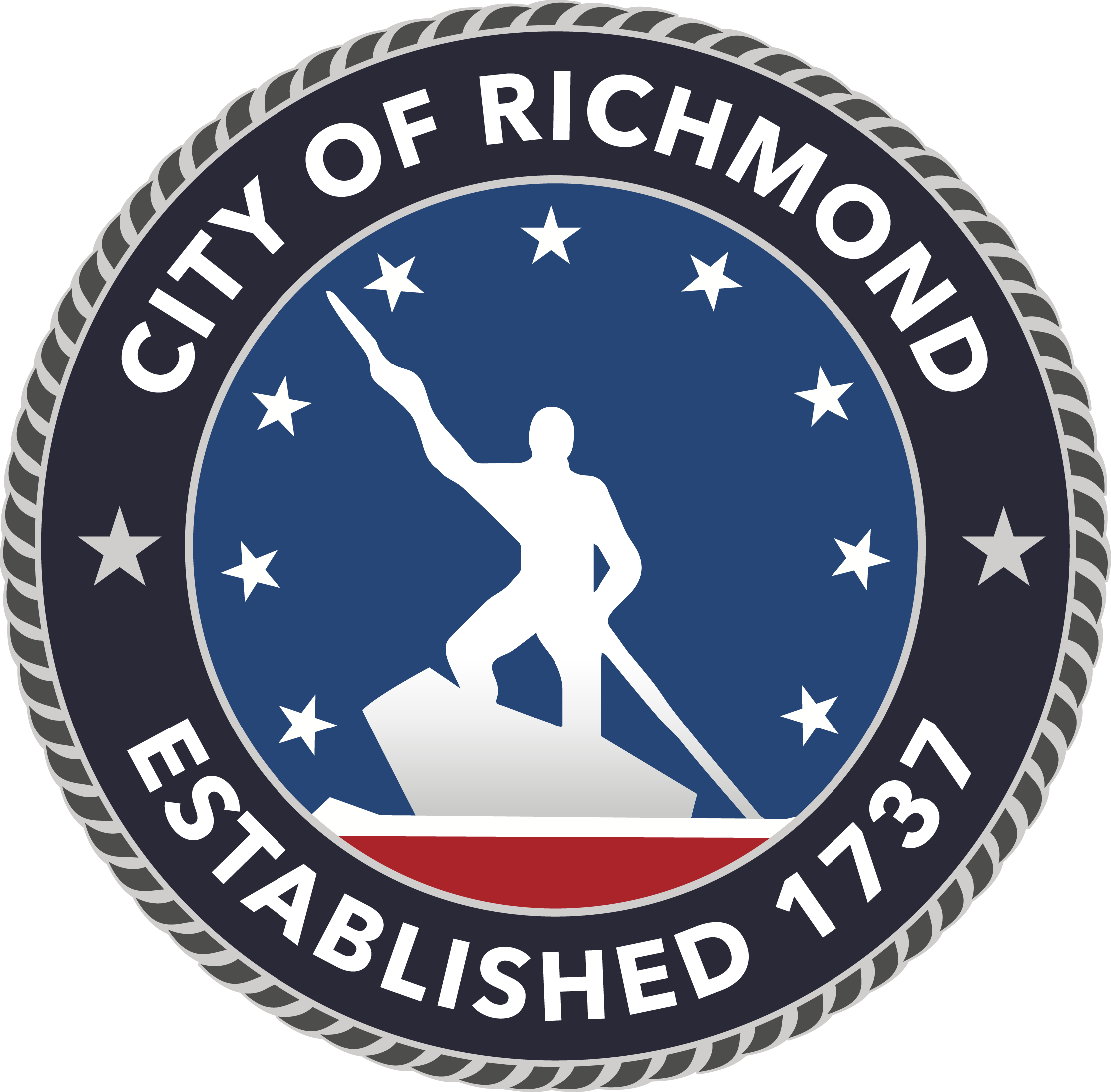Posted on Monday, April 28, 2025
Richmond, VA — The City of Richmond's Water Treatment Plant experienced an issue on Wednesday, April 23 during installation of a new fluoride pump, which led to a temporary increase in the level of fluoride in the water system for a period of five hours. Prior to this event, the fluoride system was offline for repairs. During this period, drinking water produced by the Water Treatment Plant remained safe for consumption.
Fluoride levels detected at the Water Treatment Plant were 2.67 milligrams per liter (mg/L) which is below the Maximum Contaminant Level (MCL) of 4.0 mg/L, the highest level that is allowed in drinking water by the U.S. Environmental Protection Agency (EPA). The optimal target level of fluoride is 0.7 mg/L.
The fluoride levels detected today at the Hanover point of entry was 1.6 mg/L; the level at Henrico was 1.19 mg/L; the highest level at Chesterfield was 1.21 mg/L. Current levels of fluoride range from 0.4 mg/L to 0.7 mg/L at the City of Richmond's Water Treatment Plant. At no point did samples collected in the distribution system indicate the fluoridation level exceeded the MCL of 4.0 mg/L within the region.
Although the Department of Public Utilities is currently in the process of creating new standard operating procedures for the Water Treatment Plant, plant staff did not notify the Virginia Department of Health within the required 24-hour period.
"I'm disappointed with our failure to communicate. This incident damages the work we're doing to rebuild trust — not only with the residents of Richmond, but our communities, and our regional partners, including Henrico, Chesterfield, and Hanover. We must do better," said Mayor Danny Avula.
While long-term exposure to elevated levels of fluoride can be unsafe, this incident is considered an acute exposure. See below for language from the EPA for chronic fluoride exposures. Drinking water provided by the Water Treatment Plant remains safe to drink.
Special Notice
When there is a secondary MCL greater than 2.0 mg/L, waterworks are required to provide a special notice to customers. This special notice about the City of Richmond's drinking water serves to address the potential related to cosmetic dental problems that might affect children under nine years of age. At low levels, fluoride can help prevent cavities, but children drinking water containing more than 2 milligrams per liter (mg/L) of fluoride may develop cosmetic discoloration of their permanent teeth (dental fluorosis). The City of Richmond has tested the fluoride levels within the distribution system and confirmed that the level in the nine pressure zones for the distribution system are between 1.00 mg/L and 2.94 mg/L. The City is actively flushing the pressure zones where the fluoride mg/L is above 2.0.
Dental fluorosis, in its moderate or severe forms, may result in a brown staining and/or pitting of the permanent teeth. This problem occurs only in developing teeth, before they erupt from the gums. Children under nine should be provided with alternative sources of drinking water or water that has been treated to remove the fluoride to avoid the possibility of staining and pitting of their permanent teeth. You may also want to contact your dentist about proper use by young children of fluoride-containing products. Older children and adults may safely drink the water.
Fluoride is an element that may be found naturally in sources of drinking water, such as ground water. Fluoride has been added to drinking water by drinking water systems to improve dental health.
For More Information
La instalación de una nueva bomba llevó a un nivel más alto de flúor en la planta de tratamiento de aguas; sin embargo, el agua sigue siendo segura para beber
Richmond, Virginia — La planta de tratamiento de aguas de la Ciudad de Richmond sufrió un problema el miércoles 23 de abril, durante la instalación de una nueva bomba de flúor, lo que condujo a que hubiera un aumento temporal en el nivel de flúor en el agua por un período de cinco horas. Antes de dicho evento, la planta estaba fuera de servicio por mantenimiento. Durante este intervalo, el agua potable producida por la planta de tratamiento siguió siendo segura para el consumo
El nivel detectado de flúor en la planta de tratamiento fue de 2.67 miligramos por litro (mg/L), lo cual es inferior al Nivel Máximo de Contaminantes (MCL, por sus iniciales en inglés) de 4.0 mg/L, que es nivel más alto en el agua potable que permite la Agencia de Protección Ambiental (EPA, por sus iniciales en inglés) de los EE. UU. El nivel óptimo de flúor en el agua es de 0.7 mg/L.
El nivel detectado hoy en el punto de ingreso a Hanover fue de 1.6 mg/L; en Henrico fue de 1.19 mg/L y en Chesterfield el nivel más alto fue de 1.21 mg/L. Los niveles actuales de flúor van desde 0.4 mg/L hasta 0.7 mg/L en la planta de tratamiento de aguas de la Ciudad de Richmond. En ningún momento las muestras recolectadas en el sistema de distribución mostraron que se había sobrepasado el nivel de fluoración de 4.0 mg/L en esta región.
Aunque el Departamento de Servicios Públicos está creando en este momento nuevos procedimientos normalizados de operación para la planta de tratamiento de aguas, el personal de dicha planta no notificó al Departamento de Salud de Virginia del incidente dentro de las 24 horas siguientes, como es obligatorio.
Dijo el alcalde Danny Avula: "Estoy decepcionado por nuestra falla en comunicarnos. Este incidente daña el trabajo que hemos estado realizando para reconstruir la confianza, no sólo con los habitantes de Richmond, sino con nuestras comunidades y aliados regionales, que incluyen a Henrico, Chesterfield y Hanover. Debemos hacer las cosas mejor".
Aunque la exposición a niveles altos de flúor puede ser nociva a largo plazo, este incidente se considera como una exposición aguda; se puede ver a continuación el lenguaje que utiliza la EPA para la exposición crónica al flúor. Sigue siendo seguro beber agua provista por la planta de tratamiento de aguas.
Cuando hay una medición secundaria de MCL mayor a 2.0 mg/L, es obligatorio que las plantas de tratamiento de aguas den un aviso especial a sus usuarios; dicha notificación especial acerca del agua potable de la Ciudad de Richmond sirve para manejar las consecuencias potenciales relacionadas con los problemas cosméticos en los dientes que podrían afectar a los niños menores de 9 años. En bajas cantidades, el flúor sirve para ayudar a prevenir las caries, pero los niños que beben agua que contiene más de 2 miligramos por litro (mg/L) de flúor podrían sufrir de fluorosis dental, que es una decoloración de sus dientes permanentes. La Ciudad de Richmod ha hecho pruebas del nivel de flúor en el sistema de distribución y confirmó que el nivel; de las 9 zonas de presión del sistema ha estado entre 1.00 mg/L y 2.94 mg/L. Los funcionarios de la ciudad han estado purgando las zonas de presión en las cuales el nivel de flúor supera los 2.0 mg/L.
Las formas moderadas o severas de fluorosis dental pueden resultar en manchas de color marrón y/o en picaduras en los dientes permanentes; este problema solamente ocurre en los dientes en fase de crecimiento, antes de que salgan de las encías. Los niños menores de 9 años deberán utilizar otras fuentes de agua o recurrir a agua que ya haya sido tratada para remover el exceso de flúor, con el fin de remover la posibilidad de manchado y perforación de sus dientes permanentes. Usted debería comunicarse con su dentista para hablar del uso adecuado en niños pequeños de productos que contienen flúor. Los niños mayores y los adultos pueden beber el agua corriente sin problemas.
El flúor es un elemento que se puede encontrar de forma natural en las fuentes de agua potable, incluyendo el agua extraída de pozos; además este elemento se ha añadido al agua potable de los sistemas de acueducto para mejorar la salud dental.
Si desea más información sobre el flúor y los niveles de fluoración, puede visitar la página de Internet de la Oficina de Agua Potable del Departamento de Salud de Virginia: https://www.vdh.virginia.gov/drinking-water/office-of-drinking-water/fluoridation/
Si desea más información sobre el flúor y sus posibles efectos en la salud, llame a la Línea de Atención sobre Agua Segura para Beber de la Agencia de Protección Ambiental (EPA) al 1-800-426-4791.
Notas/Temas de discusión
¿Por qué no se encontró este error de inmediato? ¿No debería haber un procedimiento normalizado de operación (SOP) en efecto para dirigir las acciones en caso de incidentes como éste?
El error fue hallado; sin embargo, no fue comunicado de manera adecuada usando los canales apropiados. Este es un SOP que está en progreso.
¿Por qué tomó tanto tiempo para que Richmond le informara al público de este evento?
El Departamento de Servicios Públicos (DPU) y la administración de la ciudad fueron informados de los niveles elevados de flúor después de que dichos niveles volvieron a la normalidad. La Ciudad se comunicó con el Departamento de Salud de Virginia (VDH) y coordinó una inspección del sistema directamente en el lugar y verificó que los niveles en el sistema de distribución coincidían con los niveles en la planta de tratamiento. El Aviso Especial al Público fue publicado tan pronto como esos niveles fueron confirmados en el sistema de distribución.
¿Richmond incumplió las reglas y/o recomendaciones del VDH?
La Ciudad no le notificó al VDH durante las 24 horas siguientes a la identificación del sobrepaso de la medición secundaria del MCL (cuando pasó de 2 mg/L).
¿Qué está haciendo la administración para garantizar que esto no vuelva a pasar?
Además de crear un procedimiento normalizado de operación (SOP), que dará instrucciones sobre cómo y cuándo realizar las notificaciones, se hará un aumento en la frecuencia de la toma de muestras para garantizar una pronta detección de cualquier problema.
¿Hubo algún efecto en la salud pública?
Puede consultar las recomendaciones del VDH y de la EPA.
¿Qué debo hacer si sospecho que mi familia o yo hemos sido afectados por los altos niveles de flúor?
Comuníquese con el laboratorio de toxicología del VDH o con la Línea de Atención sobre Agua Segura para Beber de la EPA.
Escuché que el sistema de fluoración de Richmond estaba fuera de servicio desde el incidente del 6 de enero. ¿Es cierto eso?
Eso es cierto.
Escuché que la EPA está considerando disminuir el valor del nivel máximo de contaminantes (MCL) en el caso del flúor. ¿Es cierto eso?
De acuerdo con la publicación del 7 de abril de 2025, la EPA está considerando la disminución del valor del nivel máximo de contaminantes (MCL) en el caso del flúor, basándose en el informe de agosto de 2024 del programa nacional de toxicología, que concluyó con un "nivel moderado de confianza" que la exposición a niveles de flúor por encima de 1.5 miligramos por litro (mg/L) se asocia con un coeficiente intelectual infantil más bajo. Este informe también concluyó que es necesario realizar más investigaciones para comprender si existen riesgos de salud asociados a la exposición a concentraciones más bajas de flúor: https://www.epa.gov/newsreleases/epa-will-expeditiously-review-new-science-fluoride-drinking-water



